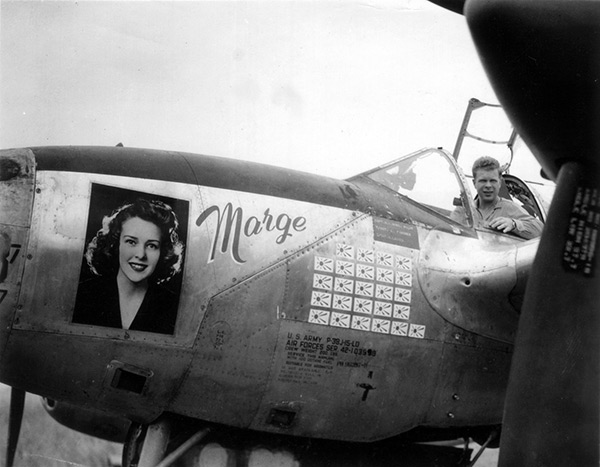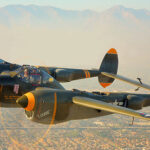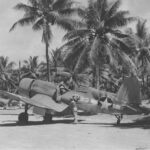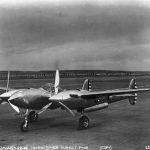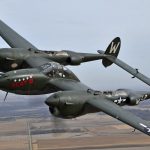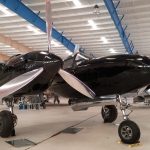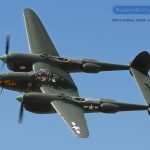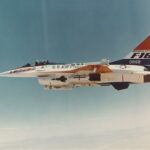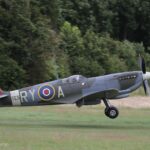Researchers announced on Thursday that they have likely found the wreckage of World War II ace Richard Bong’s plane in the South Pacific. The aircraft is a Lockheed P-38J-15-LO Serial Number 42-103993, assigned to the 5th Air Force (5th AF), 5th Fighter Command (V Fighter Command), Headquarters Squadron. Assigned to pilot Captain Richard I. Bong, who named it “Marge”. It had red propeller spinners, wingtips, and the top and bottom tips of the tail.
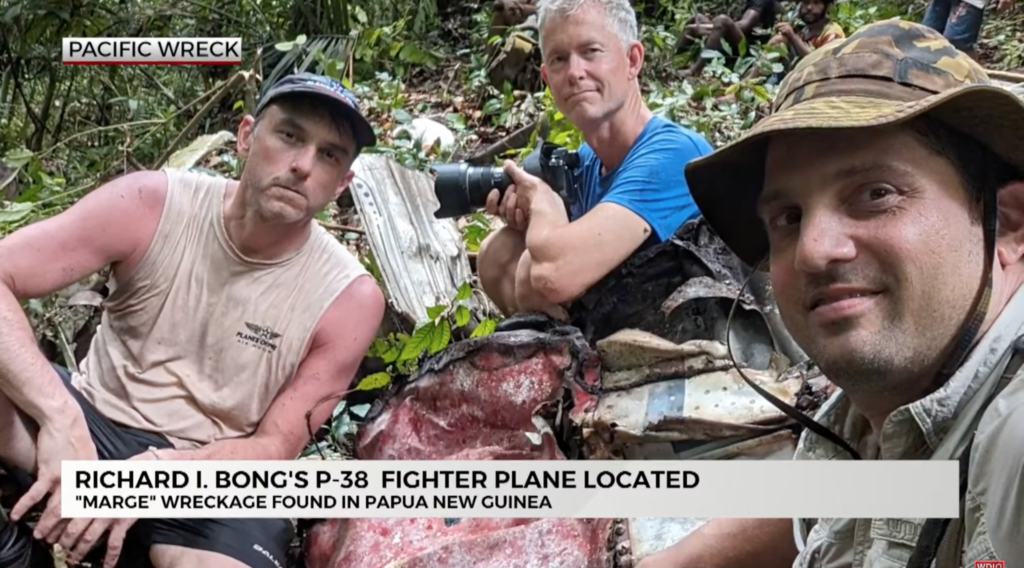
The Richard I. Bong Veterans Historical Center in Superior, Wisconsin, and the nonprofit World War II historical preservation group Pacific Wrecks revealed in March that they were undertaking a joint effort to locate Bong’s Lockheed P-38 Lightning fighter. Bong had affectionately named the plane “Marge” after his girlfriend, Marge Vattendahl.
In March 1944, another pilot, Thomas Malone, was flying the plane over what is now Papua New Guinea when engine failure caused it to spin out of control. Malone parachuted to safety before the plane crashed into the jungle.
Justin Taylan, the Director of Pacific Wrecks and the leader of the expedition, reported that the search team discovered the wreckage on May 15 in the jungles of Papua New Guinea’s Madang Province.
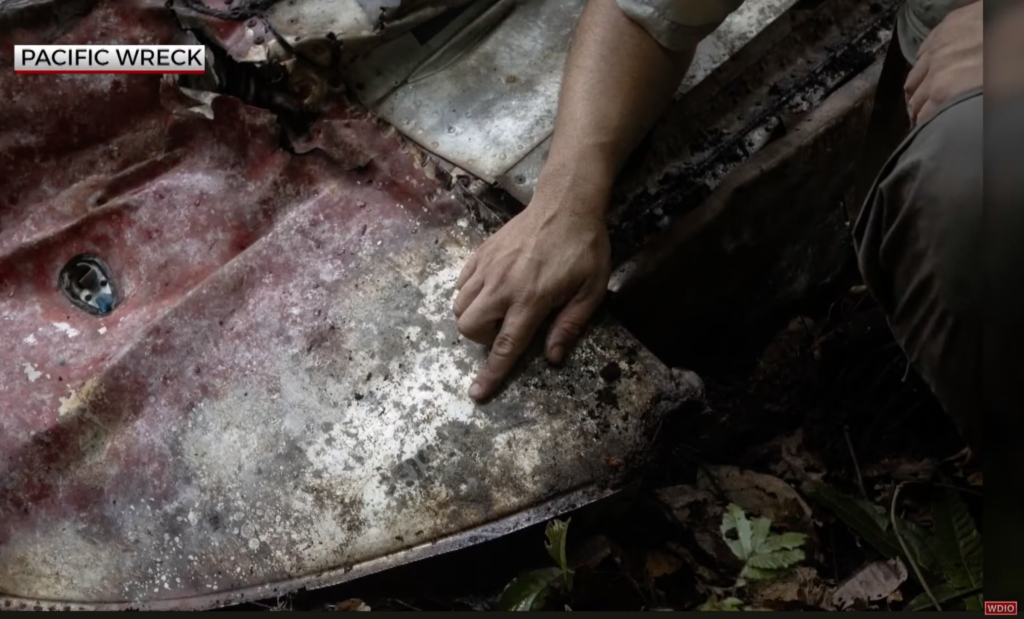
He shared photos of himself in the jungle, standing beside pieces of metal scattered on the ground. In one image, he points to what the caption identifies as a wing tip from the plane, stamped with the number “993,” the last three digits of the plane’s serial number. A closer look at the photo reveals markings that could be two “9s,” though they are partially obscured by dirt or rust and are hard to discern. Another photo features a piece of metal stamped with “Model P-38 JK.”
During a video news conference from Papua New Guinea on Thursday afternoon, Taylan stated that the serial number and model identification conclusively prove that the plane is indeed Marge. “Definitely, beyond a doubt,” he confirmed.
“I think it’s safe to say mission accomplished,” Taylan remarked. “Marge has been identified. It’s a great day for the center, a great day for Pacific Wrecks, and a great day for history.”
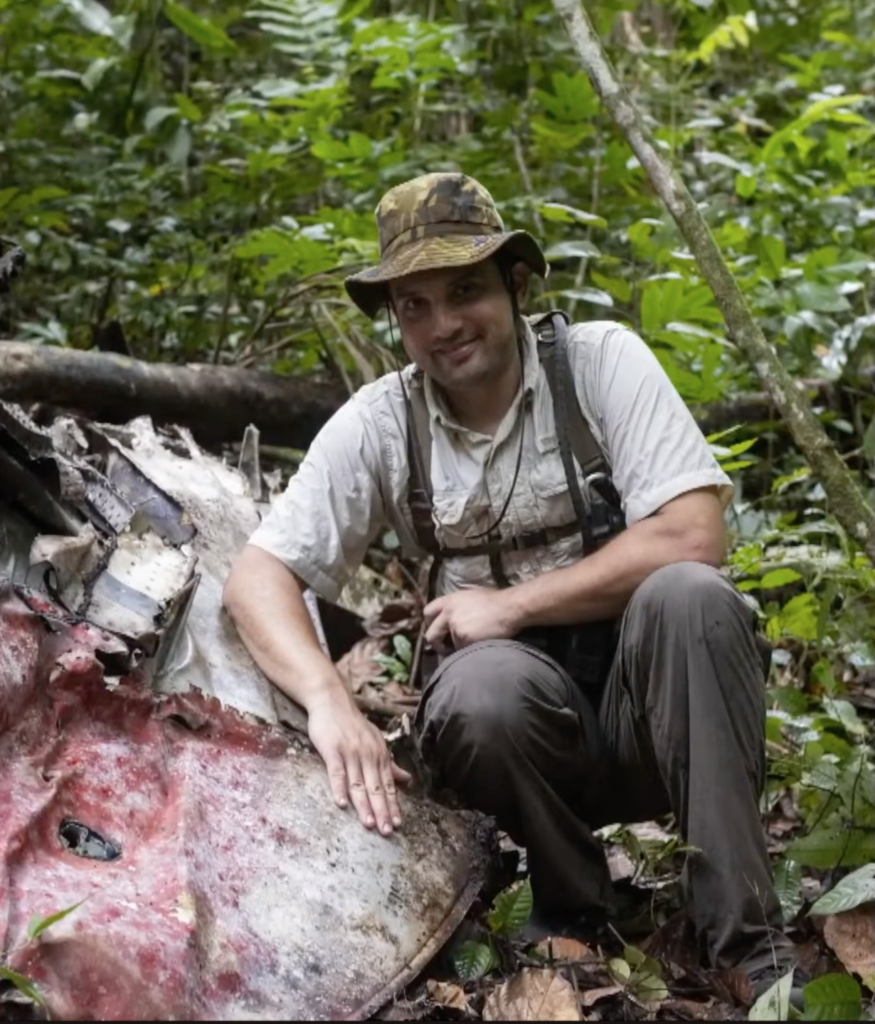
Taylan has spent years researching the location of the crash site. He explained that historical records indicated the plane went down on the grounds of a 150-year-old plantation. Initially, local residents guided the expedition to the wreck of a Japanese fighter plane, then informed the searchers about additional wreckage deeper in the jungle.
Taylan recounted that the explorers trekked through the jungle until they found wreckage in a ravine. At the top of the ravine, they discovered two aircraft engines protruding from the ground, suggesting that the plane had gone in nose-first and buried itself. Remarkably, the red paint Bong had applied to the wing tips was still visible.
Bong, who grew up in Poplar, Wisconsin, is credited with shooting down 40 Japanese aircraft during World War II. He had a portrait of Vattendahl carried with her name on the nose of his aircraft.
Bong shot down more enemy planes than any other American pilot. General Douglas MacArthur awarded him the Medal of Honor, the U.S. military’s highest decoration, in 1944. Taylan noted that Bong shot down three planes while flying this Lightning.
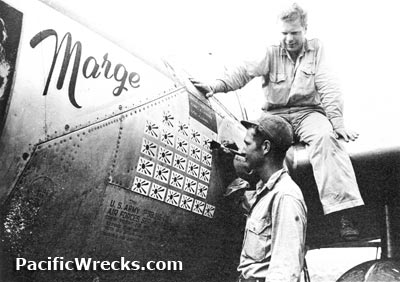
Bong and Vattendahl married in 1945. After completing three combat tours in the South Pacific, Bong was assigned as a test pilot in Burbank, California. Tragically, he was killed on August 6, 1945, when a P-80 jet fighter he was testing crashed, the same day the United States dropped an atomic bomb on Hiroshima.
Vattendahl was 21 years old when Bong died. She later became a model and magazine publisher in Los Angeles. She passed away in September 2003 in Superior.
A bridge connecting Superior and Duluth, Minnesota, bears Bong’s name, as does a state recreation area in southeastern Wisconsin.
“The Bong family is very excited about this discovery,” said James Bong, Richard Bong’s nephew, in the news release. “It is amazing and incredible that ‘Marge’ has been found and identified.







